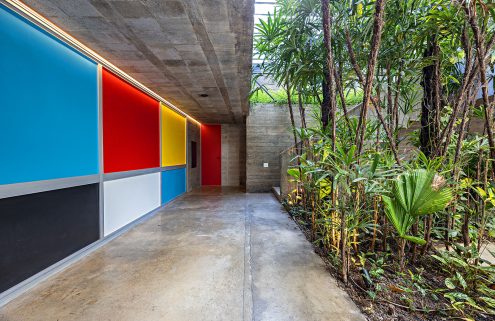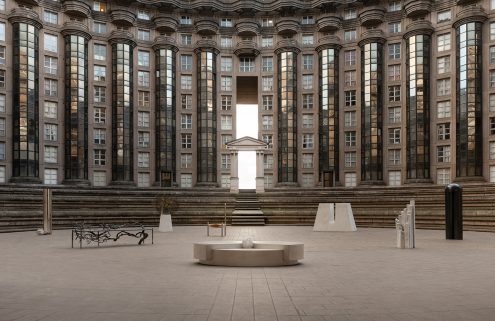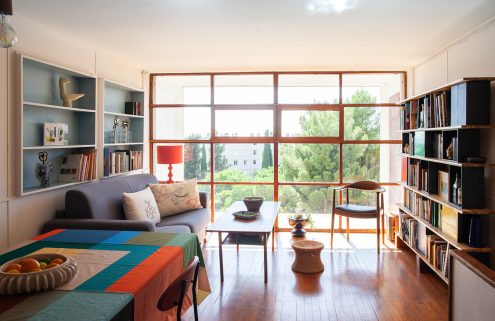
The revitalisation of London’s Hayward Gallery must have been but a twinkle in director Ralph Rugoff’s eye when, five years ago, he and Andreas Gursky began collaborating on the German artist’s first British photograph retrospective. Yet the undertakings had similarities. Both grappled with a turbulent period of history and both sought to cast a bold, modern oeuvre in its best light.
Built in 1968, the Hayward Gallery was always a problematic space, hoisted beyond easy reach in the upper heights of the Southbank Centre, plagued by frustrating dead ends and dark, foreboding hallways. A series of 66 pyramidal rooflights (conceived by Henry Moore but shoddily realised) never fulfilled their mission – a false ceiling was installed over the upper galleries almost immediately, to protect them from leaks.

The newly renovated exhibition halls. Photography: Morley Von Sternberg, courtesy of Hayward Gallery

The newly renovated exhibition halls. Photography: Morley Von Sternberg, courtesy of Hayward Gallery

The newly renovated exhibition halls. Photography: Morley Von Sternberg, courtesy of Hayward Gallery

The newly renovated exhibition halls. Photography: Morley Von Sternberg, courtesy of Hayward Gallery
In autumn 2015, the gallery closed to the public while British architects Feilden Clegg Bradley tore out the ceiling, recast the stone floors and rebuilt the roof pyramids to the profile of the originals.
For his part, Gursky needed to scale down his considerable collection of hyperdetailed, photographs to 60. And to find walls on which to display the largest prints – including the immersive (and expensive, having sold for a record-breaking £2.7 million) lowlands landscape ‘Rhein II’.

‘If I were to install many works on one wall, it would become too cluttered,’ he said, addressing a crowd ahead of the launch. ‘But I like Brutalist architecture. I didn’t want to interfere too much – I wanted to leave as much concrete surface as possible.’
He also worried that, when displayed chronologically, the colour-enhanced works of German factories and North Korean parades would clash. ‘Each image stands by itself and represents a world of its own,’ he said. ‘That’s why they were so difficult to install.’

But install them he did. Both Gursky’s collection and the Hayward’s refurbished galleries finally open to the public this week. (During the Hayward’s two-year closure, it produced a mesmerising off-site show at the Store Studios, 180 The Strand.)
And though Gursky’s expansive scenes might at first seem better suited to the hangar-like proportions of a Tate Modern or a MoMA, they make good bedfellows within the intimate scope of the Hayward.

The subtle refit never becomes a bigger story than the art itself, so there’s a quiet closeness to leaning in and inspecting Gursky’s broad scenes across factory floors or stock exchanges. There’s still a welcoming texture in its Brutalist fabric that avoids glaring conflicts with the work.
‘It’s not a building trying to be a neutral white cube,’ Rugoff said before the launch.

In some places the changes are, perhaps, too subtle. Getting up to the lobby is still a game of chance. And a tightly wound interior staircase, the main conduit to the upper galleries, is still long and ominous, daring you not to take it. Yet upstairs, with 16 new, pyramidal coffers in the roof, the galleries pull out to make room for Gursky’s ambitious vistas, providing them with natural halos of light.
‘The amazing formal rigor and inventiveness of the photographs is enhanced and amplified by the building’s spick and span condition,’ says Rugoff.

This is the building we were meant to have from the beginning… and then some, Rugoff reckons.
‘It probably looks better than the day it was opened.’



Read next: 10 new museums opening in 2018






















